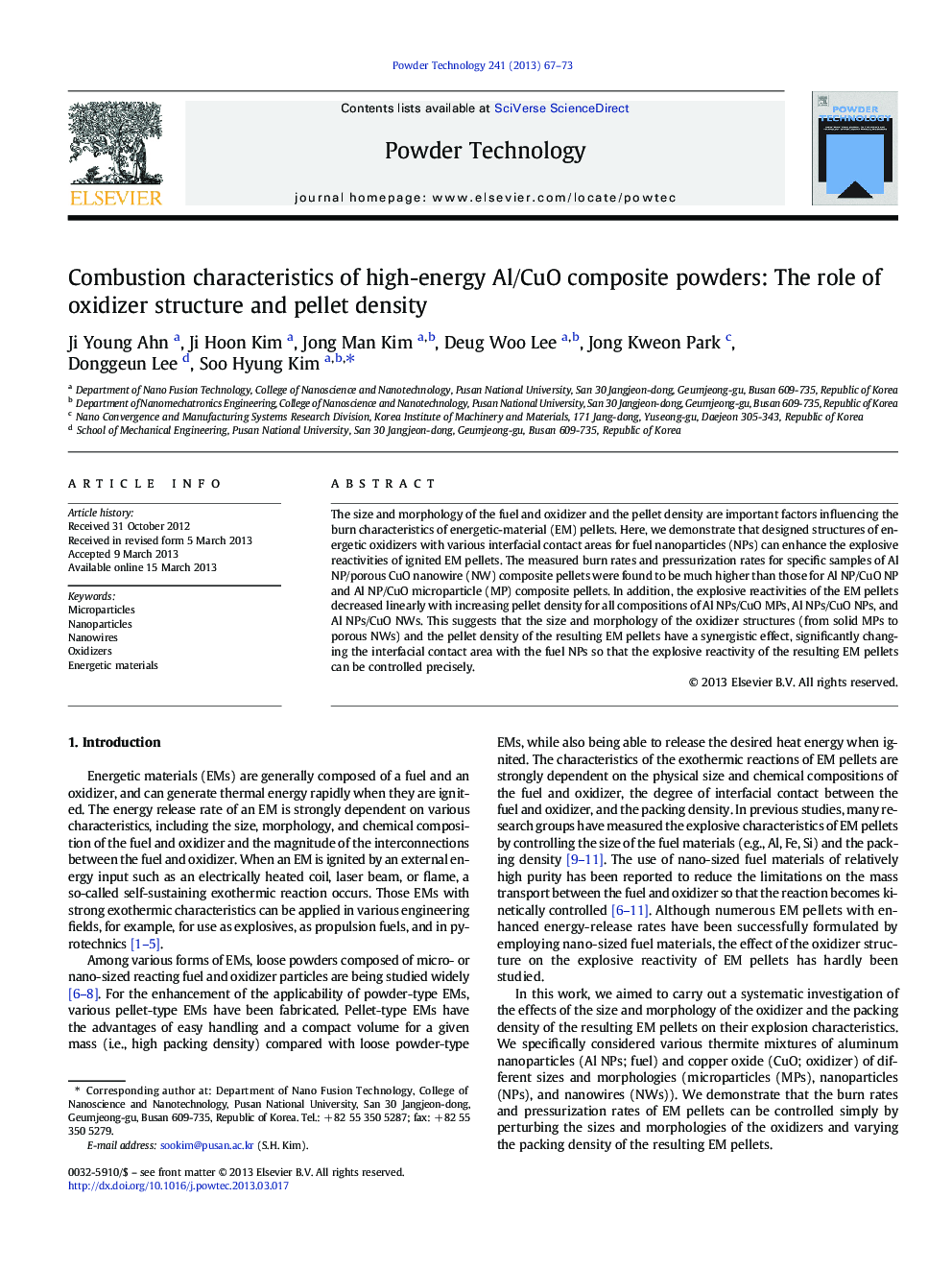| کد مقاله | کد نشریه | سال انتشار | مقاله انگلیسی | نسخه تمام متن |
|---|---|---|---|---|
| 236400 | 465671 | 2013 | 7 صفحه PDF | دانلود رایگان |

• High-energy Al/CuO composite powders with various pellet densities are fabricated.
• Al /CuO nanocomposites are more homogeneously formed than microcomposites.
• The combustion reactivity of Al NP/CuO NW is much stronger than Al NP/CuO MP.
• The combustion reactivity of Al/CuO decreases with increasing their pellet density.
The size and morphology of the fuel and oxidizer and the pellet density are important factors influencing the burn characteristics of energetic-material (EM) pellets. Here, we demonstrate that designed structures of energetic oxidizers with various interfacial contact areas for fuel nanoparticles (NPs) can enhance the explosive reactivities of ignited EM pellets. The measured burn rates and pressurization rates for specific samples of Al NP/porous CuO nanowire (NW) composite pellets were found to be much higher than those for Al NP/CuO NP and Al NP/CuO microparticle (MP) composite pellets. In addition, the explosive reactivities of the EM pellets decreased linearly with increasing pellet density for all compositions of Al NPs/CuO MPs, Al NPs/CuO NPs, and Al NPs/CuO NWs. This suggests that the size and morphology of the oxidizer structures (from solid MPs to porous NWs) and the pellet density of the resulting EM pellets have a synergistic effect, significantly changing the interfacial contact area with the fuel NPs so that the explosive reactivity of the resulting EM pellets can be controlled precisely.
This work demonstrates that the combustion reactivity of Al/CuO composite powders can be controlled by tuning micro- and nanostructures of oxidizer component and adjusting their pellet density. Nanostructured oxidizer and lower pellet density promote the combustion reactivity of Al/CuO composite powders due to a larger interfacial contact area and less thermal loss between fuel and oxidizer components.Figure optionsDownload as PowerPoint slide
Journal: Powder Technology - Volume 241, June 2013, Pages 67–73